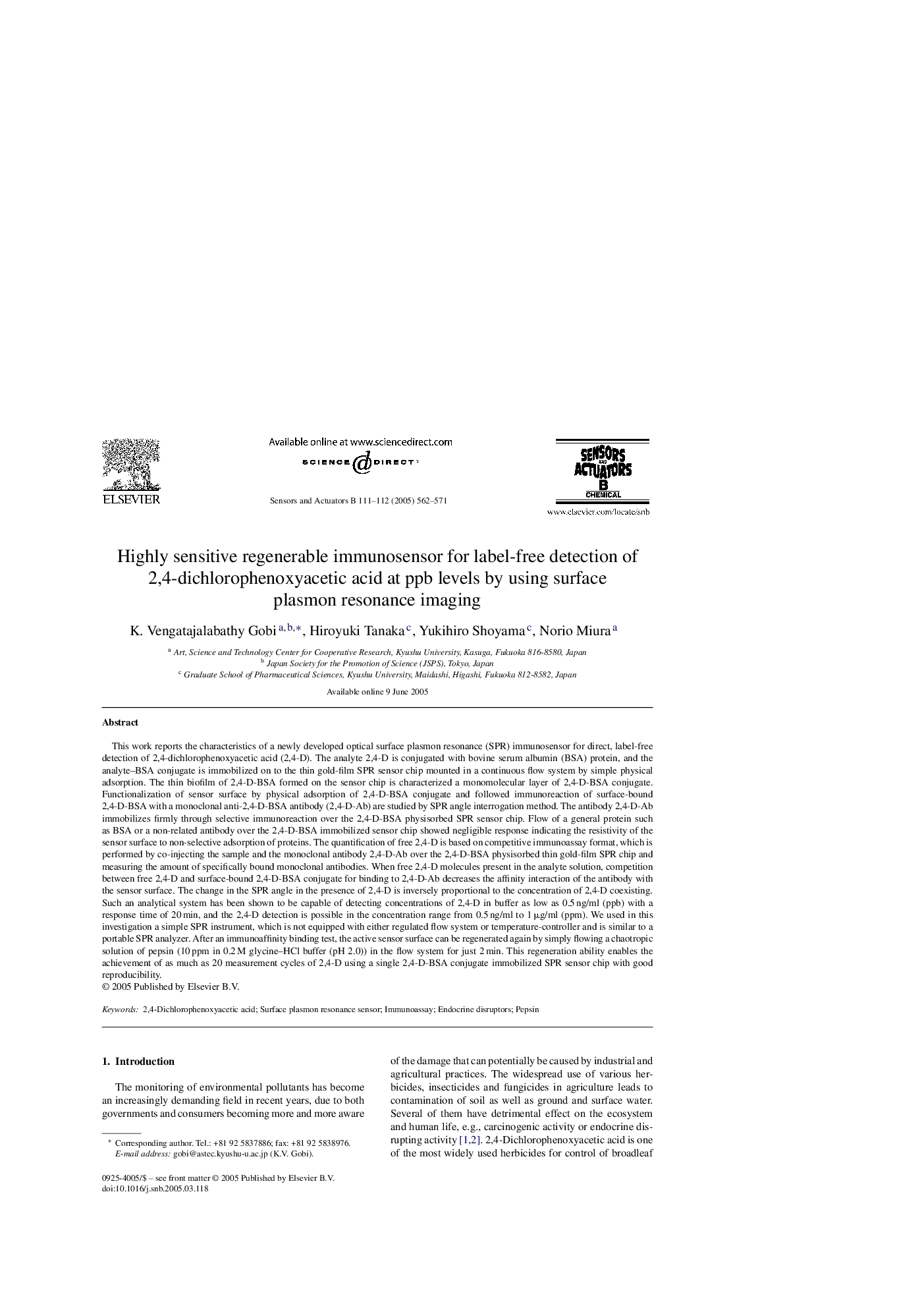| Article ID | Journal | Published Year | Pages | File Type |
|---|---|---|---|---|
| 9700861 | Sensors and Actuators B: Chemical | 2005 | 10 Pages |
Abstract
This work reports the characteristics of a newly developed optical surface plasmon resonance (SPR) immunosensor for direct, label-free detection of 2,4-dichlorophenoxyacetic acid (2,4-D). The analyte 2,4-D is conjugated with bovine serum albumin (BSA) protein, and the analyte-BSA conjugate is immobilized on to the thin gold-film SPR sensor chip mounted in a continuous flow system by simple physical adsorption. The thin biofilm of 2,4-D-BSA formed on the sensor chip is characterized a monomolecular layer of 2,4-D-BSA conjugate. Functionalization of sensor surface by physical adsorption of 2,4-D-BSA conjugate and followed immunoreaction of surface-bound 2,4-D-BSA with a monoclonal anti-2,4-D-BSA antibody (2,4-D-Ab) are studied by SPR angle interrogation method. The antibody 2,4-D-Ab immobilizes firmly through selective immunoreaction over the 2,4-D-BSA physisorbed SPR sensor chip. Flow of a general protein such as BSA or a non-related antibody over the 2,4-D-BSA immobilized sensor chip showed negligible response indicating the resistivity of the sensor surface to non-selective adsorption of proteins. The quantification of free 2,4-D is based on competitive immunoassay format, which is performed by co-injecting the sample and the monoclonal antibody 2,4-D-Ab over the 2,4-D-BSA physisorbed thin gold-film SPR chip and measuring the amount of specifically bound monoclonal antibodies. When free 2,4-D molecules present in the analyte solution, competition between free 2,4-D and surface-bound 2,4-D-BSA conjugate for binding to 2,4-D-Ab decreases the affinity interaction of the antibody with the sensor surface. The change in the SPR angle in the presence of 2,4-D is inversely proportional to the concentration of 2,4-D coexisting. Such an analytical system has been shown to be capable of detecting concentrations of 2,4-D in buffer as low as 0.5 ng/ml (ppb) with a response time of 20 min, and the 2,4-D detection is possible in the concentration range from 0.5 ng/ml to 1 μg/ml (ppm). We used in this investigation a simple SPR instrument, which is not equipped with either regulated flow system or temperature-controller and is similar to a portable SPR analyzer. After an immunoaffinity binding test, the active sensor surface can be regenerated again by simply flowing a chaotropic solution of pepsin (10 ppm in 0.2 M glycine-HCl buffer (pH 2.0)) in the flow system for just 2 min. This regeneration ability enables the achievement of as much as 20 measurement cycles of 2,4-D using a single 2,4-D-BSA conjugate immobilized SPR sensor chip with good reproducibility.
Keywords
Related Topics
Physical Sciences and Engineering
Chemistry
Analytical Chemistry
Authors
K. Vengatajalabathy Gobi, Hiroyuki Tanaka, Yukihiro Shoyama, Norio Miura,
